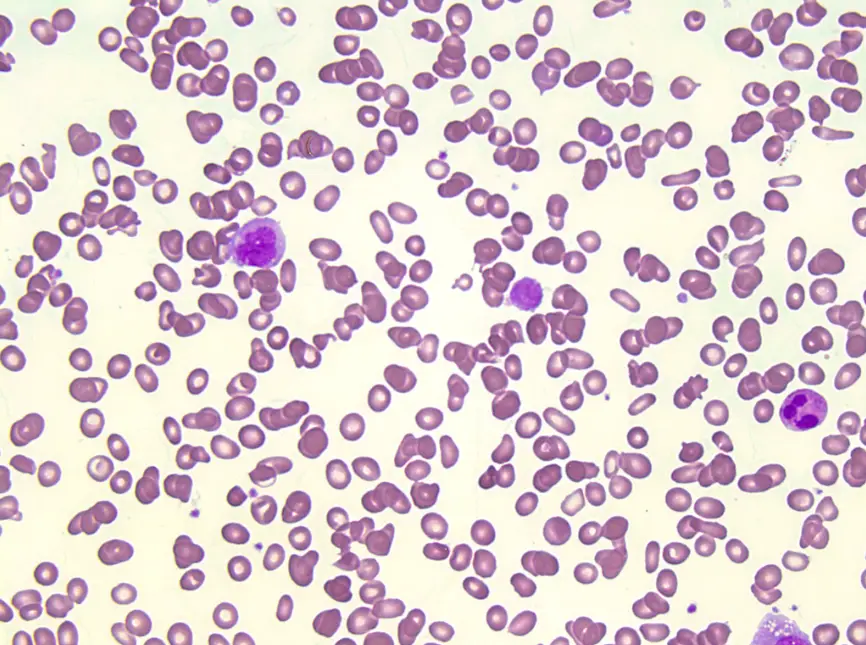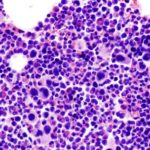Primary myelofibrosis is a rare bone marrow disorder characterized by abnormalities in blood cell production (hematopoiesis) and scarring (formation of fibrous tissue) within the bone marrow.
What is the Pathology of Primary Myelofibrosis?
The pathology of primary myelofibrosis is:
-Etiology: The cause of primary myelofibrosis is unknown (idiopathic). Approximately, 50 percent of people with primary myelofibrosis have a mutation of the JAK2 gene. Mutations in the CALR gene occur in approximately 20% of the patients.
-Genes involved: JAK2 gene, CALR gene, MPL gene.
-Pathogenesis: The sequence of events that lead to primary myelofibrosis results from neoplastic transformation of a multipotent bone marrow stem cell. These progeny cells stimulate bone marrow fibroblasts (which are not part of the neoplastic transformation) to secrete excessive collagen.
-Histology: The histology associated with primary myelofibrosis shows hypocellular bone marrow with usually alternating cellular and hypocellular regions, atypical megakaryocytes, marked collagen or reticulin fibrosis.
How does Primary Myelofibrosis Present?
Patients with primary myelofibrosis typically are males, age range of 50 to 70 years old. The symptoms, features, and clinical findings associated with primary myelofibrosis include anemia, splenomegaly, or, in later stages, general malaise, weight loss, fever, or splenic infarction.
How is Primary Myelofibrosis Diagnosed?
Primary myelofibrosis is diagnosed by complete blood count and peripheral smear, bone marrow aspiration/biopsy and testing for JAK2, CALR and MPL mutations.
How is Primary Myelofibrosis Treated?
Primary myelofibrosis is treated with the therapy of choice, ruxolitinib (JAK pathway inhibitor). For patients with advanced disease, allogeneic stem cell transplantation may be beneficial.
What is the Prognosis of Primary Myelofibrosis?
The prognosis of primary myelofibrosis is poor. The median survival is 5 years from onset, but variation is wide; some patients have a rapidly progressing disorder, including development of acute myeloid leukemia, with short survival, but most have a more indolent course.



